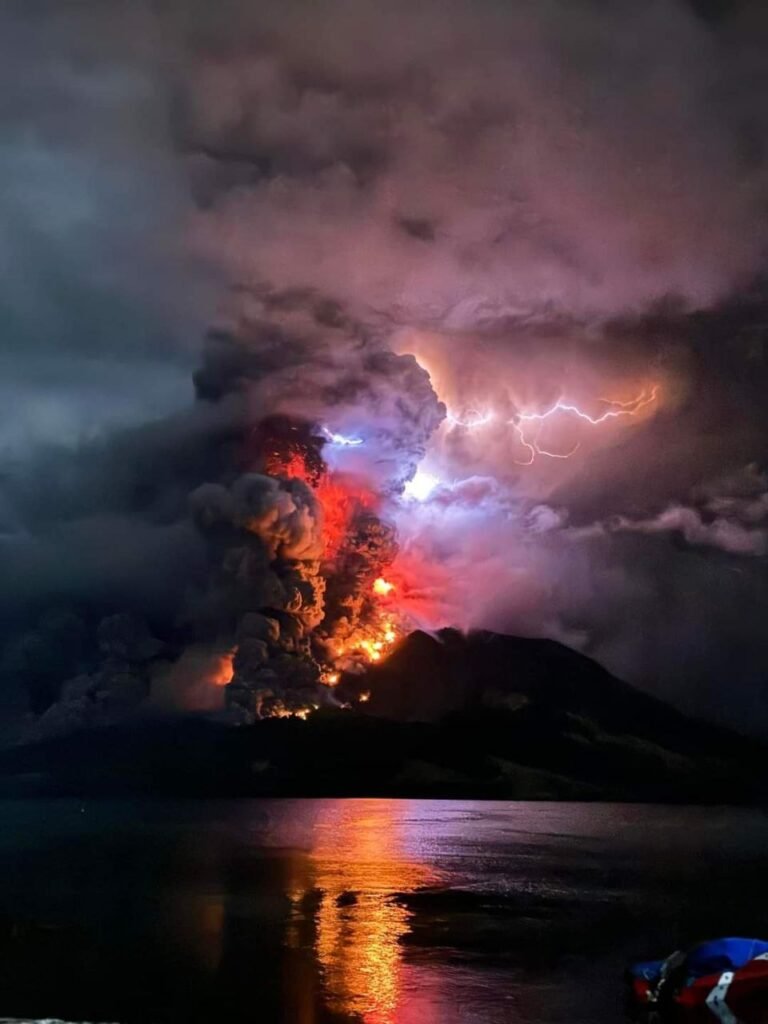Indonesia, known for its stunning landscapes and vibrant culture, portrayed a very different canvas as Ruang, one of its most active volcanoes, erupted violently recently. The eruption sent a massive plume of ash and volcanic gases soaring into the atmosphere, some 50,000 feet up. While the immediate impact is felt locally, the repercussions of such volcanic activity could extend far beyond the borders of Indonesia, potentially influencing weather patterns on a global scale in the coming months and years.
Ruang’s eruption is not an isolated event but rather part of the complex geological activity that characterizes the Pacific Ring of Fire, an area prone to earthquakes and volcanic eruptions due to the movement of tectonic plates. The eruption of Ruang is particularly significant due to its intensity and the volume of material ejected into the atmosphere. The ash and sulphur dioxide released during the eruption can have far-reaching effects on climate and weather patterns. Initial reports suggest the eruption’s volcanic explosivity index (VEI) could be between 4 and 5, just for comparison the Hunga Tonga eruption was scored 6. Many recent weather phenomena have been attributed to the effects of the Hunga Tonga eruption. So we are potentially heading into unknown waters now with this added eruption.

One of the immediate consequences of a volcanic eruption of this magnitude is the injection of ash and sulphur dioxide into the stratosphere, the second major layer of Earth’s atmosphere. These particles can remain suspended in the atmosphere for an extended period, forming a veil that can partially block sunlight from reaching the Earth’s surface. This phenomenon, known as volcanic winter, can lead to a temporary cooling effect on the planet.
However, the impact of Ruang eruption on global weather patterns is not limited to cooling effects. The release of sulphur dioxide into the atmosphere can also lead to the formation of sulphate aerosols, tiny particles that can act as condensation nuclei for water vapor. This can potentially enhance the formation of clouds and alter precipitation patterns in different regions around the world.
Moreover, volcanic eruptions can disrupt atmospheric circulation patterns, such as the jet stream, which plays a crucial role in determining weather patterns across the globe. Changes in the jet stream can influence the distribution of rainfall, the frequency and intensity of storms, and the occurrence of extreme weather events such as heatwaves and droughts.
The long-term impact of Ruangs eruption on global weather patterns is subject to various factors, including the duration and intensity of the eruption, the altitude reached by the volcanic plume, and the prevailing atmospheric conditions. While some volcanic eruptions have relatively localized effects, others have been known to trigger significant climatic anomalies that persist for months or even years.
In recent history, the eruption of Mount Pinatubo in the Philippines in 1991 had a noticeable cooling effect on global temperatures for several years following the event. Similarly, the eruption of Mount Tambora in Indonesia in 1815 resulted in the “Year Without a Summer” in 1816, causing widespread crop failures and famine in many parts of the world.

While it is challenging to predict the precise impact of Ruang’s eruption on global weather patterns, scientists and meteorologists will closely monitor atmospheric conditions in the coming months to assess any significant changes. Advanced computer models and satellite observations will provide valuable insights into the dispersion of volcanic particles and their potential effects on climate dynamics.




